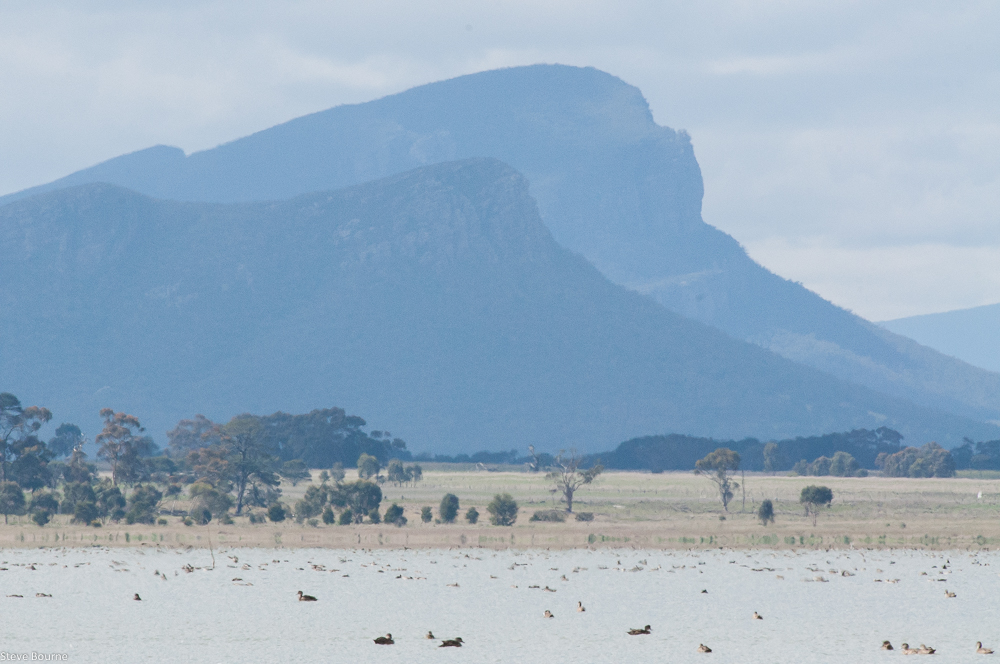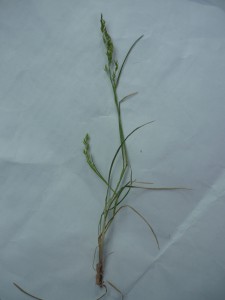
Lake Linlithgow – Threatened flora of the Western Volcanic Victorian Plains
The Lake Linlithgow and Bulrush Swamp Lake Reserve encompasses a number of volcanic lakes, formed by the moulding and weathering of basalt lava flows. These unique volcanic lakes create valuable habitat across the western district, and are particularly important to migratory and non-migratory waterbirds. At more than 1400 ha, Lake Linlithgow contains a variety of vegetation communities including Plains Grassland, Brackish Wetland and saltmarsh.
The nationally vunerable (EPBC Act 1999) Salt Lake Tussock-grass (Poa sallacustris) grows in patches on the shore of both lakes. This small, spreading Poa only reaches 30cm when in flower, and is thought to have the ability to spread rhizomatously in response to inundation and soil property changes around the lake. Invasive weeds such as Spiny Rush (Juncus acutus), Tall Wheat Grass (Thinopyrum ponticum), and Phalaris (Phalaris aquatica) are encroaching into the habitat of the Salt Lake Tussock-grass along the lake shores, competing with and shading out the low lying native vegetation.
The Hamilton Field Naturalists Club (HFNC) have actively promoted restoration and conservation of the lake reserve over a number of decades, and among their achievements is the removal of grazing which has seen rapid recovery of the native vegetation, and a number of native species re-appearing after a period of absence.
With the help of funding from the Victorian Government, Nature Glenelg Trust has worked with the HFNC, as well as land managers Parks Victoria and the Southern Grampians Shire Council, to undertake strategic management of the threatening weeds, and promote conservation of the site to the wider community.
On ground actions
The project has implemented effective on-ground works over 2015 and 2016, including:
- Monitoring of long-term P. sallacustris quadrats in 2015 and 2016 and mapping of all P. sallacustris patches around the shores of Lake Linlithgow, Bulrush Swamp and Krause Swamp.
- Chemical treatment of Phalaris where encroaching on high-value P. sallacustris habitat.
- Treatment of Spiny Rush infestations around the lake.
- Slashing and spraying Tall Wheat Grass – particularly around the Boonawah Creek terminus.
- Treatment of African Boxthorn on the banks.
- Removal of exotic (European) trees.
- Mapping of all woody weeds for further removal efforts.


